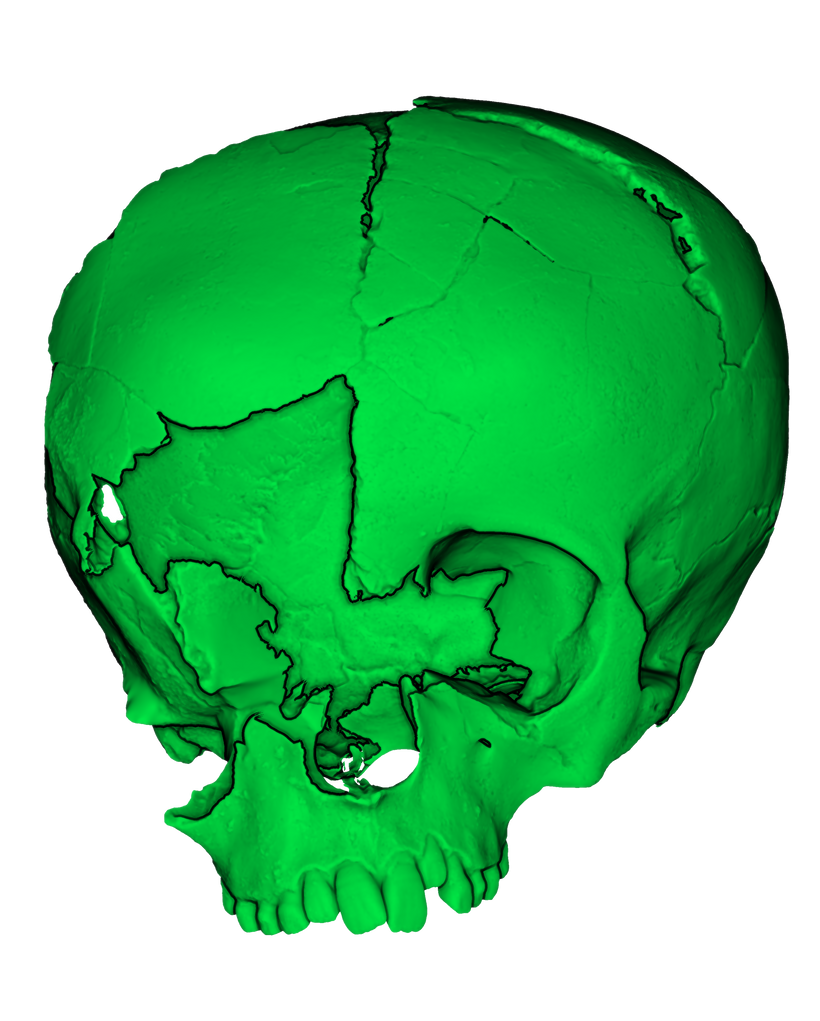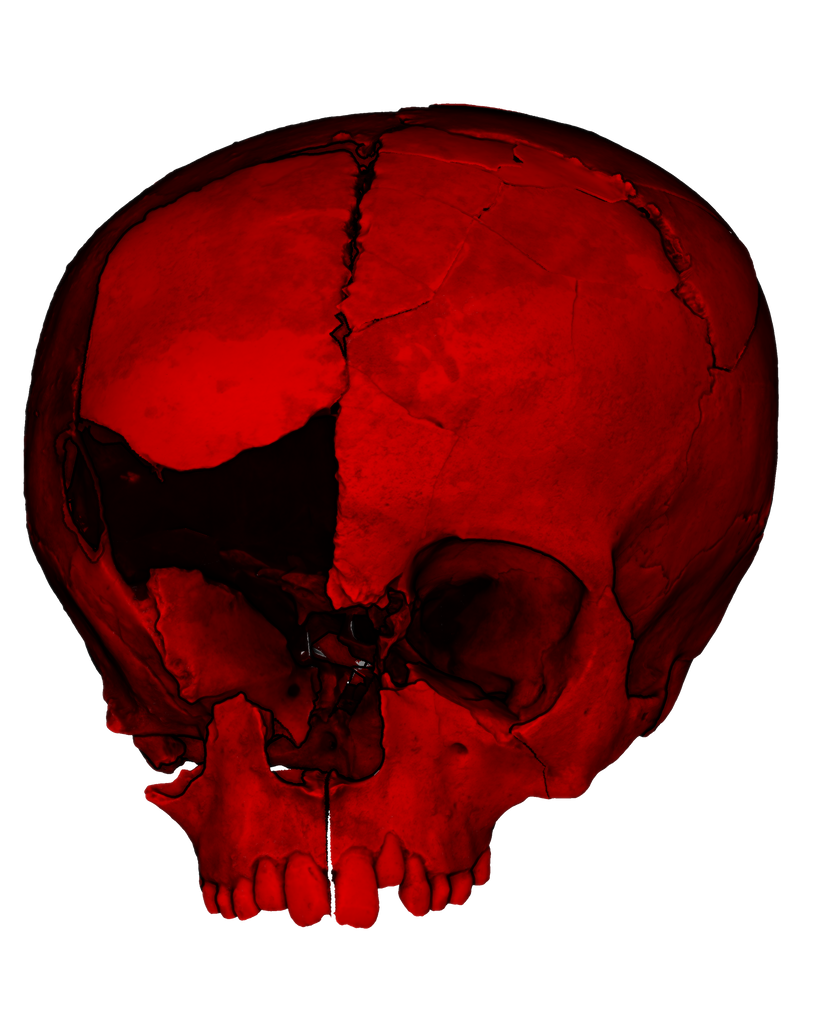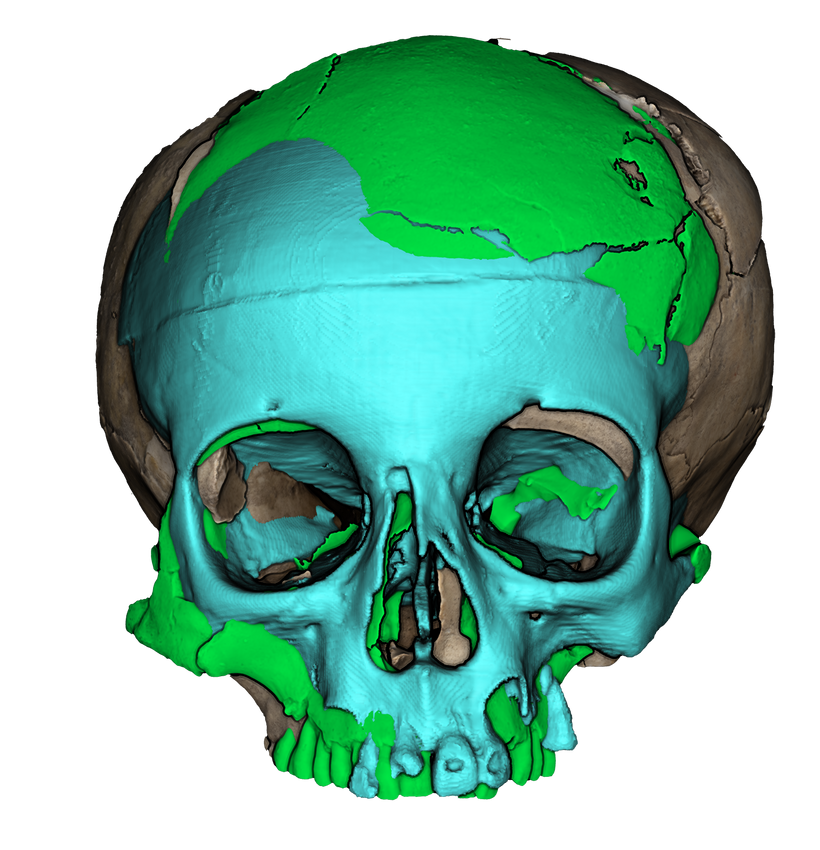APAC Labs researchers Rahaf Orabi and Sorin Hermon are contributing to the MOCORP (Body modifications and representations of the human body in Near Eastern Neolithic societies: a methodological approach) Project, focusing their efforts on examining the skulls discovered at Khirokitia, a significant Neolithic site located in Cyprus.
Amidst the array of skulls unearthed from this ancient settlement, one particular specimen has captured their attention due to its unmistakable signs of artificial modification. This intriguing discovery prompted an extensive digital analysis to uncover the secrets held within this unique skull and better understand its significance.
 © APAC The 3D model of the skull created with a structured light scanner (before digital restoration)
© APAC The 3D model of the skull created with a structured light scanner (before digital restoration)
A comprehensive 3D documentation and analysis was performed, which allowed for a meticulous virtual restoration process for the modified child skull. This preparatory step was crucial in ensuring that the skull was accurately represented in its original form, laying the foundation for a thorough investigation into its history and significance.

© APAC The 3D model of the skull created with a structured light scanner (after digital restoration)
The project’s analysis will now be expanded to a comparative study, offering researchers the opportunity to put the digitized sample in conversation with other skulls unearthed from Khirokitia and similar sites. This comparative approach serves as a window into understanding the cultural practices and beliefs surrounding cranial modification during the Neolithic period.
 © APAC A digital comparison of the modified skull with two other skull from Khirokitia and France
© APAC A digital comparison of the modified skull with two other skull from Khirokitia and France
MOCORP aims to shed light on the process of cranial deformation practiced by ancient civilizations, uncover the mysteries concealed within these ancient artifacts, and offer valuable insights into the practices and rituals of past civilizations.
I want to learn more:
Website:
Email: apaclabs@cyi.ac.cy

